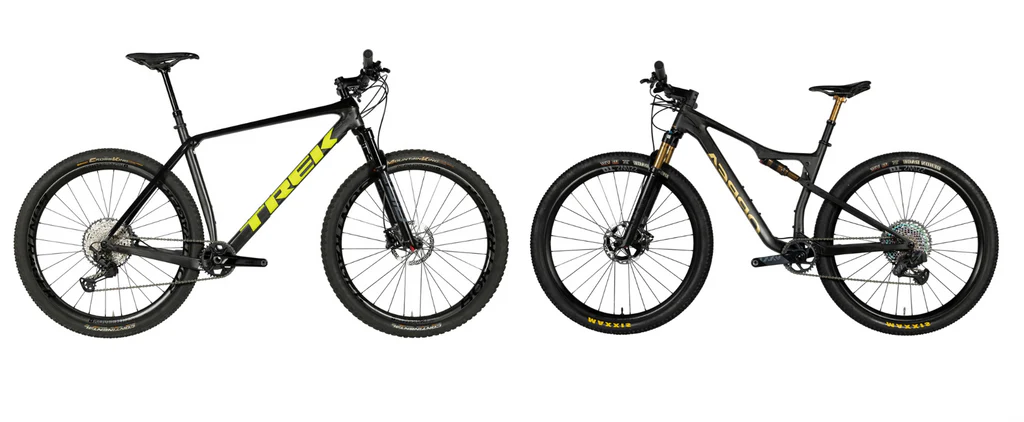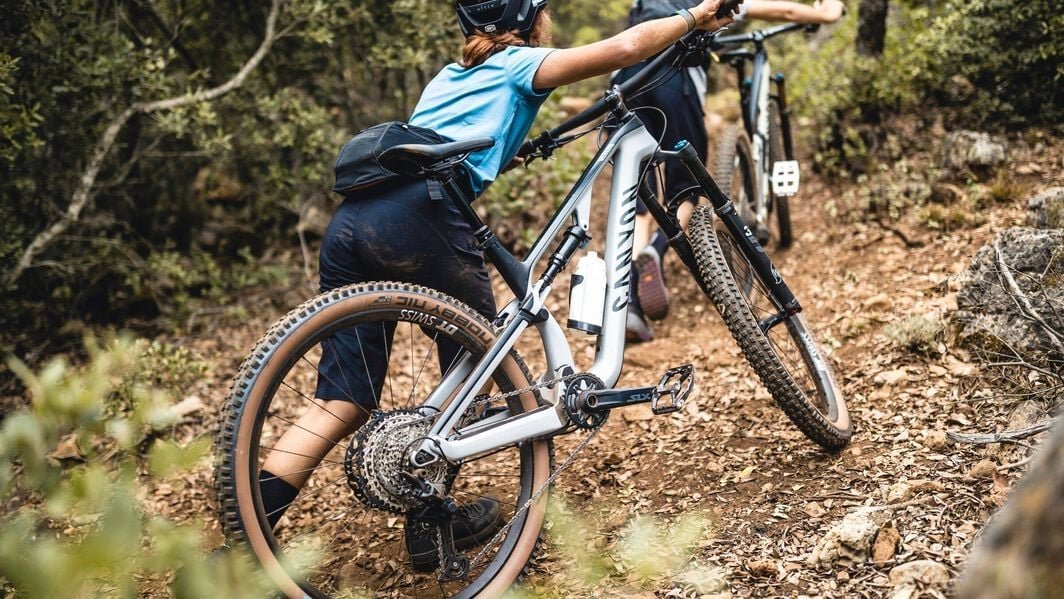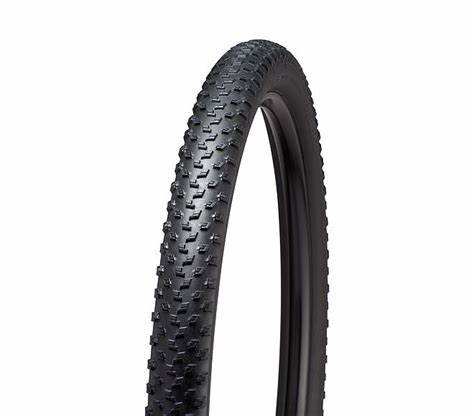When it comes to mountain biking, choosing the right bike is crucial for the type of terrain you plan to ride and the experience you want to have. The two main types of mountain bikes are full-suspension and hardtail. Both have their own unique benefits, and the decision between the two depends on factors like riding style, budget, and personal preference. Let’s break down the key benefits of both full-suspension and hardtail mountain bikes to help you make an informed decision.
What is a Full-Suspension Mountain Bike?
A full-suspension mountain bike features both front and rear suspension systems. This means that the bike has shock absorbers in the front fork (like most bikes) and also in the rear triangle, giving it dual suspension.
Benefits of a Full-Suspension Mountain Bike
1. Better Control and Comfort on Rough Terrain
The main advantage of a full-suspension bike is its ability to absorb impacts from rough terrain, like roots, rocks, and drops, making the ride smoother and more controlled. The suspension system cushions the blows, reducing the strain on your body and allowing you to maintain better control over the bike.
2. Increased Traction
With both front and rear suspension, the wheels of a full-suspension bike can stay in better contact with the ground. This is especially beneficial on loose, uneven, or technical terrain where grip is crucial. The increased traction helps riders tackle challenging climbs and fast descents with more confidence.

3. Improved Speed on Downhill Sections
For downhill enthusiasts, a full-suspension bike is ideal. The suspension system allows riders to maintain higher speeds on descents, as it absorbs shocks from jumps, bumps, and drops. Riders experience greater stability at high speeds, making the bike perfect for more aggressive riding styles.
4. Less Fatigue on Long Rides
With the added comfort of the suspension system, full-suspension bikes can help reduce fatigue over long rides. Absorbing more of the bumps along the trail means your body endures less punishment, allowing you to ride longer without discomfort.
5. Versatility for Varied Terrain
Full-suspension bikes are versatile and can handle a wide range of terrains, from smooth trails to technical descents. They’re ideal for riders who want to explore a variety of trails, whether climbing steep hills or navigating downhill sections with rocks and obstacles.
What is a Hardtail Mountain Bike?
A hardtail mountain bike, on the other hand, has only front suspension, with no rear shock absorber. This makes the bike lighter and simpler in design, which appeals to many riders, especially those on a budget or who prefer efficiency.
Benefits of a Hardtail Mountain Bike
1. Lightweight and Efficient
Without the additional rear suspension, hardtail bikes tend to be lighter than full-suspension models. This reduced weight makes them more efficient for pedaling, especially on smooth trails and climbs. For cross-country riders who prioritize speed and efficiency, a hardtail can be an excellent choice.
2. More Affordable
Hardtail bikes are generally less expensive than full-suspension models. The simpler design means fewer components, which reduces the overall cost. This makes them a great option for beginners or riders who are just starting out and don’t want to invest heavily in a full-suspension bike.
3. Less Maintenance
With fewer moving parts and no rear suspension to worry about, hardtail bikes require less maintenance. This simplicity means fewer mechanical issues, making hardtail bikes more durable and easier to care for, especially for riders who prefer a low-maintenance option.
4. Better for Smooth Trails
On smooth or moderately rough terrain, a hardtail can actually be more efficient than a full-suspension bike. Without the rear suspension absorbing energy, more of your pedaling power is transferred to the wheels, allowing for faster acceleration and better overall speed on smoother trails.
5. Ideal for Climbing
Due to their lightweight design and lack of rear suspension, hardtail bikes excel at climbing. The absence of a rear shock means there’s no energy lost to suspension movement, giving you better pedaling efficiency and making it easier to conquer steep climbs.
Which One is Right for You?
Deciding between a full-suspension and a hardtail mountain bike comes down to your riding style, the terrain you’ll encounter, and your budget.
- Choose a Full-Suspension Bike If:
- You plan to ride on technical, rocky, or uneven terrain where control and comfort are key.
- You enjoy downhill riding or hitting more challenging trails.
- You prioritize comfort and control over long rides, and you don’t mind the extra weight and cost.
- Choose a Hardtail Bike If:
- You’re riding on smoother trails or cross-country routes where efficiency and speed are important.
- You’re just starting out or on a budget, and you want a lightweight and affordable bike.
- You enjoy climbing or prefer a bike that requires less maintenance.
Conclusion
Both full-suspension and hardtail mountain bikes have their own unique benefits, and the best choice depends on the type of riding you do. Full-suspension bikes offer better control, traction, and comfort on rough terrain, while hardtail bikes are lighter, more efficient, and easier to maintain. Whether you prefer tackling technical descents or speeding along smooth trails, choosing the right bike will enhance your mountain biking experience.




